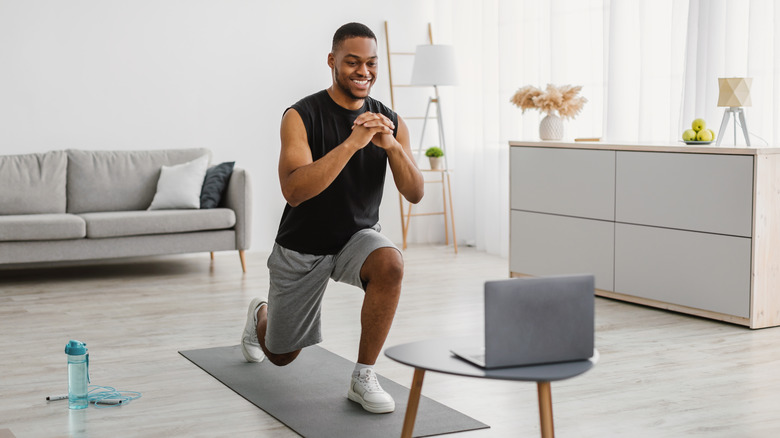What Your Trainer Might Be Getting Wrong About Lunges
Lunges are one of the most common exercises used to strengthen your legs. They can be performed with or without added weight and target the glutes, quadriceps, and hamstrings. However, when this exercise is performed incorrectly it can cause strain on the knees. One common mistake that many people make with lunges is thinking that their toes have to stay behind their knees while they perform the movement (via Livestrong). While this can help some people with knee pain, many athletes overdo it with this practice and can end up still causing strain in the knees.
"Even without the presence of pain, people will tend to avoid letting the knee travel over the toe, purposefully reducing their range of motion," Melissa Garcia, DPT, CSCS, told Livestrong. "Although everyone's lunge will look a little different, we should not be avoiding this motion!" Lunges should be performed in a way that doesn't cause discomfort or pain in the knees. You can do this by keeping your core tight and your chest up during the exercise. It's okay to pivot your feet as necessary to create the most ideal movement for your body.
Lunges are a great exercise to add to your routine
Once you correct your lunge form, this exercise should be a staple in your workout routine. "Lunges work multiple larger muscle groups at the same time," celebrity trainer Jillian Michaels told Insider. "They build lower body strength and help to maintain muscle mass and bone density in the lower body." Lunges can improve balance and flexibility, which in turn can prevent injuries while working out and in your daily life.
According to Healthline, performing lunges regularly can aid in weight loss, improve alignment, and improve your posture. There are many different variations of lunges that each work your lower body a little differently. Side lunges, for example, target your hips while twist lunges activate your core muscles more intensely. Other lunge variations include walking lunges, reverse lunges, and curtsy lunges.
If you are experiencing pain when performing lunges, you may want to consider working with a trainer. They can help you with your form and ensure that you are performing the exercise correctly.


